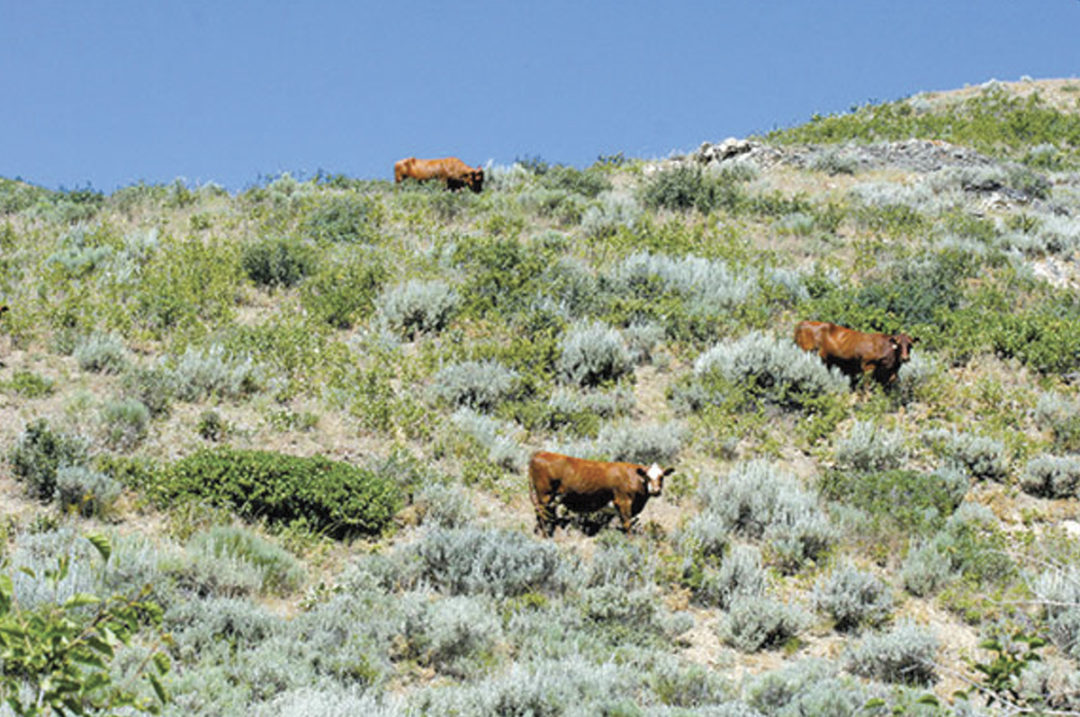A recent study published by a journal called Environmental Management has called for the end of grazing on public lands due to climate change. With funding from the Wyss Foundation, a radical environmentalist, foreign-based organization, researchers produced “Adapting to Climate Change on Western Public Lands: Addressing the Ecological Effects of Domestic, Wild, and Feral Ungulates,” which proclaims that global warming necessitates the end of livestock grazing – in fact, any grazing – on public lands. The study makes a series of claims and citations, each of which can be countered by credible studies.
As elected officers of organizations dedicated to representing cattle producers and public lands ranchers, we feel it is important to dispel some of the many myths put forth in this agenda-driven research study, and focus on the facts regarding the benefits of public lands grazing to the environment, to communities across the West and to the country.
The authors of the study, led by Oregon State University professor emeritus Robert Beschta, claim that livestock grazing is a leading stressor on rangelands already suffering from climate change; that livestock are contributing to greenhouse gases; and that the removal of public lands livestock grazing would have only minimal effects on Western communities.
The authors add that greater populations of large predators such as wolves would improve ecosystem health; anything that will put producers out of business, it seems, will do.
Before going any further, let’s take a look at who funded this propaganda passed off as research.
The founder of the Wyss Foundation, Swiss multi-billionaire Hansjorg Wyss, has donated millions to organizations like Defenders of Wildlife, Greenpeace and Center for American Progress.
The foundation had a hand in creating five million acres’ worth of national monuments under the Clinton administration.
According to RANGE Magazine, the Wyss Foundation has also pushed for federal ownership of private land across the West.
If the organization’s goal of federal land acquisition and “protection” is better management of Western rangelands, they’re in for quite a disappointment. Private lands are consistently better managed than federal lands.
The Wyss Foundation has done its part to bring economic suffering to Western rural communities that have relied on public lands resources for generations. Its role in funding this “study” comes as no surprise.
The study claims that for most rural economies and the West in general, “the economic impacts of managing public lands to emphasize environmental amenities would be relatively minor to modestly positive.”
This line alone portrays ignorance of what it takes for “environmental amenities” to even exist.
Range scientists have written volumes on the benefits of grazing and what happens in its absence, including devastating wildfire and a decline in plant growth and wildlife.
The study’s authors claim that a “minor to modestly positive” effect would be seen if grazing were eliminated from federal lands.
The 22,000 public lands ranchers who actually care for and live off of that land would disagree.
Public lands supply about 20 percent of the forage in the Western states, where approximately half of the land is federally owned.
The Department of the Interior reported this year that in 2011 grazing on Bureau of Land Management lands alone contributed $1.41 billion in economic impact and added 16,954 direct jobs to the economy.
The tax base for our rural communities and schools depends on the jobs and commerce created by federal lands grazing.
Without it, the historic and heralded American West would be forever transformed. Without grazing, open spaces would be lost.
Public land ranchers own nearly 120 million acres of private lands that are intermingled, often unfenced, with the 259 million acres of public rangelands where they graze their livestock during part of the year.
Losing public lands grazing would render many ranchers incapable of continuing their operations, thereby taking their private base properties out of production and forcing them to sell them for uses more profitable than ranching, such as farming or industrial and residential development.
Even on undeveloped rangelands, the loss of grazing would hurt plant systems, wildlife, air quality and water quality, which impacts non-federal lands as well. Well-managed grazing is proven to be linked to wildlife diversity and habitat.
Grazing also stimulates plant and root growth, enriches and aerates the soil, and helps seeds germinate and grow. Benefits from grazing are reaped by wildlife, watersheds and the overall environment.
On the other hand, un-grazed grass increases the risk of wildfires. One small fire of 3,000 acres is estimated to emit as much carbon dioxide as would driving more than 100,000 cars for one year, according to the Evergreen Institute.
This year alone, wildfires have decimated over 7.2 million acres of grasslands and forests, along with homes lying in the path of destruction.
Grazing as a means of fuel reduction is one of the only tools the federal land management agencies have at their disposal to reduce the threat of catastrophic wildfires.
Meanwhile, the study’s authors rely on previously debunked research inaccurately naming livestock as responsible for 18 percent of the nation’s manmade greenhouse gas emissions – but the EPA estimates that number to be closer to three percent.
It’s disappointing that in this day and age of advancing range science and continually improving grazing practices, Environmental Management would give this misleading study such a platform. Those of us who know better have an obligation to spread the truth about grazing.





